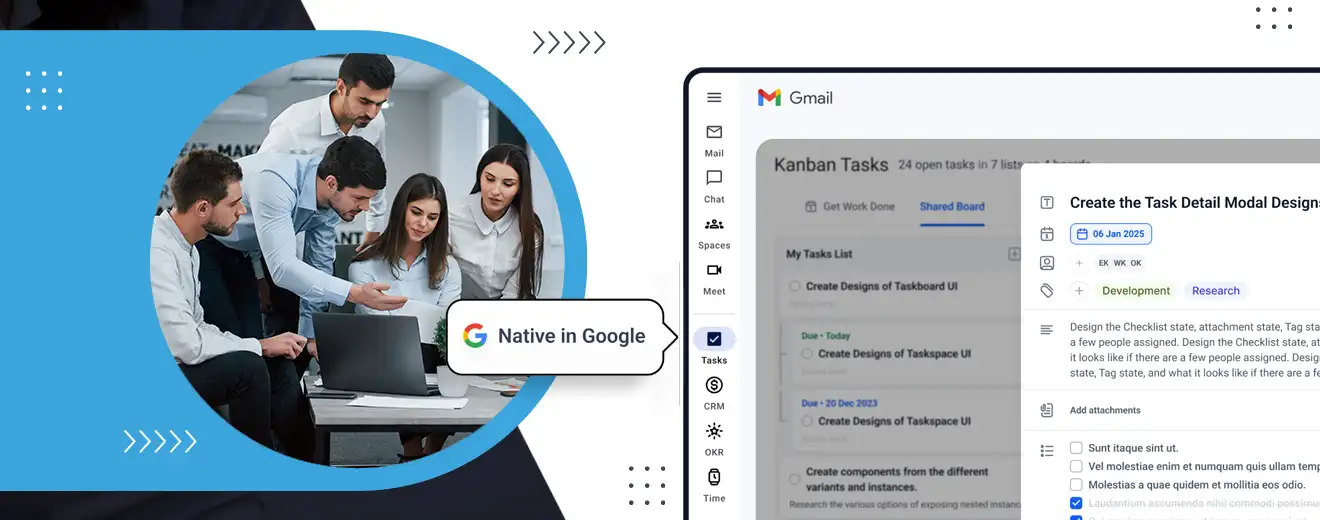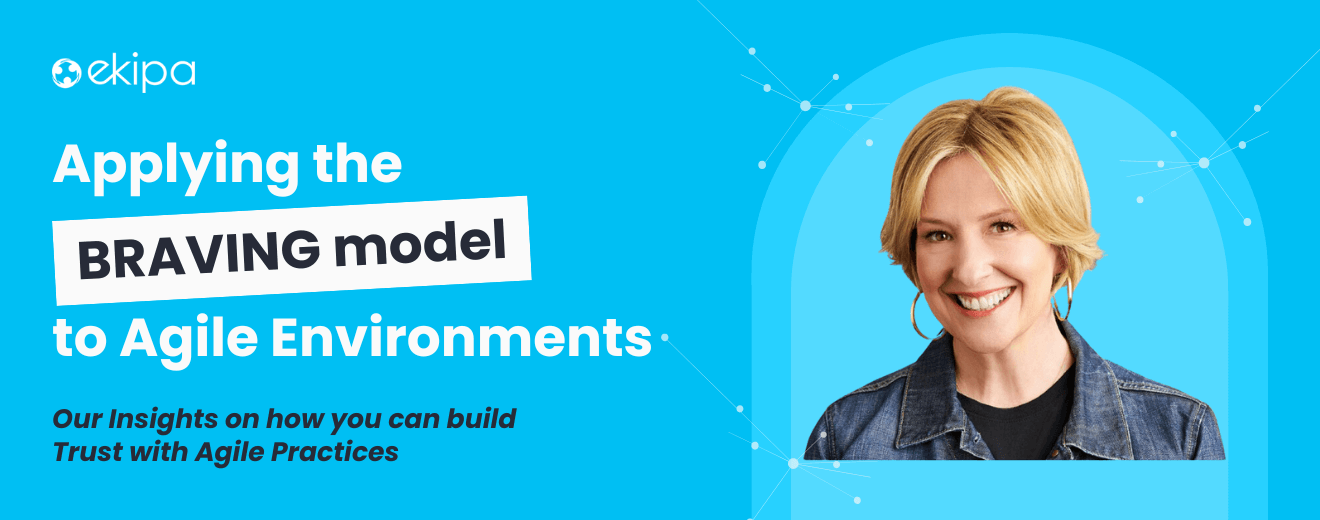Why would it be a good idea for me and my organisation to engage an agile coach? That’s a perfectly valid question. When googling the words “Agile” and “Business agility”, a whole series of wide ranging topics, frameworks, and even more opinions, tools and experts pop up on your screen.
So you might first want to figure out what the trend is all about. Or is it maybe already a fad? How can we make sense of it all? And more importantly, why could it be useful for my organisation and our company strategy?
What the world needs now..
In fact we would not call it a trend, and therefore not ‘a fad’ either. On the contrary.
It’s a movement and it has been growing steadily ever since the principles got noted down in 2001 which provided a useful reference and guiding star for teams who were suffering from clunky, unsuccessful projects as well as unsatisfactory products, disappointed customers and wasteful disengaging ways of working.
The traditional models, methodologies and project tools supporting a plan-driven mindset that were developed more than a century ago, had proven successful during the industrial revolution, and have been mainstream ever since, but all this seemed to be hopelessly failing when products and services started to require digital knowledge.
The success of new products and services today doesn’t just increasingly depend on technical and digital capability. Competitive advantage is also strongly connected to marketing, effective communication, and efficient collaboration. Somehow or other we are all knowledge workers, and more and more customers are tech savvy, highly demanding and always looking for the best next thing out there. This creates a highly volatile, uncertain, complex and often ambiguous business reality (VUCA), because that’s the way the world is wired now, as a whole.
That said, there is a need for agile ways of working and thinking in each organisation, now more than ever before. Knowing more about it is one of the first steps, while engaging an agile coach can help you get things moving in the right direction.
Agility can be as powerful as you allow it to be.

If you perceive agility as a state of mind, it is as curious and explorative as a toddler’s. Agility is not a predefined lifeless thing, it is like a living and breathing organism. It can grow and expand into every nook and cranny. It takes up the space you give it and is not afraid to put its fingers in the plug holes, subsequently short circuiting your solid company powerhouse and laying bare the sources of disengagement and burnout, as well as the wasteful practices and the hidden money eating monsters lurking in the shadows. These sources of these issues are almost always systemic elements or remnants of rigid century-old structures, rather than people-related aspects.
“A bad system will beat a good person every time.” (W.Edwards Deming)
Bureaucracy—what we see commonly practised in most large companies today—is the term we use for the combined systems and processes that are put in place to enable decision-making. The idea of establishing systemic boundaries is not a bad one, but when taken too far, bureaucracy becomes limiting, and it mostly disables speed, human engagement and team spirit. Drawing on more than a decade of research, the study from Gary Hamel and Michele Zanini – the authors of the book Humanocracy – has indicated that company bureaucracy nowadays wastes up to $9 trillion in lost economic output per year, for all OECD countries in total. Wouldn’t it be interesting to calculate how much bureaucracy costs in your organisation and how that compares to other companies? (Find a link below*)
We dare state that transforming your organisation while navigating on an “Agile compass” is an efficient approach to lay bare the wastes of excessive bureaucracy. (Also check our previous blog about the role of the agile coach as a waste detector.) This means that with the right focus and a clear view of the desired outcomes, introducing agile ways of working can help you simplify the system of decision making, and strip down your organisation’s processes to the minimum viable bureaucracy.
Related: Applying an agile mindset and ways of working to improve your Personal Agility
So what does it take to get the benefits of agile ways of working?
It takes a gradual and profound mindshift to support a company-wide paradigm shift.
According to the dictionary, a paradigm shift is an important change that happens when the usual way of thinking about or doing something is replaced by a new and different way. More so, it involves a change of the transformative kind, which means that the change holds the likelihood (the promise?) to lift the organisation in its entirety (people, process, product, profit) to another more optimal level that is unknown at the starting point.
This in itself is a huge gamechanger: the recognition that we cannot fully predict where we will end up. We know, that IS scary. But hey, we tackle this messy challenge every day in our daily personal lives, and admittedly, we’re all pretty good at it. So why is it so hard in the work environment? Because it’s bigger than ourselves, the relations get too complex to oversee and manage, and we adapt our behaviour to what the established system dictates. Seeing this parallel aids in highlighting the nature of complexity and helps us to acknowledge that changing the system ultimately leads to different behaviour on the workfloor.
An agile coach can inject and support this narrative, setting out helpful boundaries for effective collaboration and value creation while laying bare the wasteful ones. We apply storytelling to help people cross the gap and use evidence based data points to monitor progress.
How did we get here in the first place?
From being a nimble startup, and throughout the consolidation phase of a company business model, we humans have the tendency to start cluttering up our value stream and communication processes. Why? Because it gets harder to see the bigger picture, we simply optimise for what we know and understand, and we are keen to meet the needs of the boss, enabling hierarchical decision making.
That’s not a crime, it’s in fact the tried and trusted survival routine of supporting an inspiring leader, and respecting social order. Though when organisations grow and scale up, we often do not have the courage to respectfully tackle that solidified process and trade it for a truly efficient, dispersed decision making model.
An agile coach is often externally hired at first, before companies start building internal capability. That’s because these external coaches can observe and analyse the system more objectively. Their way of working is not yet not defined or limited by the existing structure and social norms and therefore they still have that ‘courage’, whether unknowingly or purposefully.
Now where to start?

Reflect on the added value that your organisation creates. This can be a set of products or services, with direct or indirect value to a customer or consumer. Now think of any of these and try to trace the flow of value, following it back upstream. What are the steps you come across? And how helpful are they really? Do they add value directly or indirectly? Opening up this conversation and facilitating the growing insights and learnings can be a powerful jumping board for the entire transformation exercise.
As agile coaches we put that value in the spotlight, and we use it as a compass to direct everyone involved towards the waste that is slowing it down – somewhat like healthcare professionals investigating cholesterol in a clogged artery. That is often the best way to start. In this sense, an agile coach can hold and interpret that compass while facilitating internal transformation leaders to plot out the journey forward to a more value driven organisation.
That is the paradigm that needs to shift. Companies have often become too process and plan-driven, using century-old tools and methodologies for resource efficiency. Instead we suggest shifting the focus to value and flow efficiency.
Related: Crafting a Successful Digital Transformation Strategy for Your Business
To conclude
Any well-run experiment has the potential to trigger a shift in the system, create a ripple effect and even gradually change the direction of the entire fleet. But it requires space, intention, courage, dedicated action and effective storytelling. Getting the skills onboard to establish this and build that capability is key to transforming into an adaptive value-driven organisation.
In this and the following blogs we would like to explore the elements that are related to making that paradigm shift. We will give some pointers to what you could do to start shifting your organisation, your team, your way of working and we are happy to answer any questions or ideas you may have about this. In the last blog in this series we will explain more about the mindshift. So zoom in and stay tuned.

.png)



